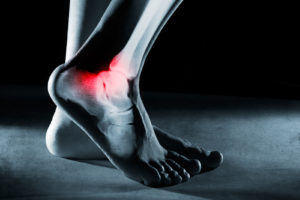
Non-surgical Treatment
Extracorporeal shockwave therapy (ESWT) is an effective treatment modality for plantar fasciitis pain unresponsive to conservative nonsurgical measures for at least three months. Evidence from meta-analyses suggests significant pain relief lasts up to one year after the procedure. However, debate about the therapy’s efficacy has persisted. ESWT can be performed with or without anesthesia though studies have suggested that the therapy is less effective when anesthesia is given. Complications from ESWT are rare and typically mild when present. Known complications of ESWT include the development of a mild hematoma or an ecchymosis, redness around the site of the procedure, or migraine.
Corticosteroid injections are sometimes used for cases of plantar fasciitis refractory to more conservative measures. There is tentative evidence that injections may be an effective for pain relief in the first month but not after that. Foot orthoses have been demonstrated as an effective method to reduce plantar fasciitis pain for up to 12 weeks. The long-term effectiveness of custom orthotics for plantar fasciitis pain reduction requires additional study. Orthotic devices and certain taping techniques are proposed to reduce pronation of the foot and therefore reduce a load on the plantar fascia resulting in pain improvement.
Another treatment technique known as plantar iontophoresis involves applying anti-inflammatory substances such as dexamethasone or acetic acid topically to the foot and transmitting these substances through the skin with an electric current. Moderate evidence exists to support the use of night splints for 1–3 months to relieve plantar fasciitis pain that has persisted for six months. The night splints are designed to position and maintain the ankle in a neutral position thereby passively stretching the calf and plantar fascia overnight during sleep.
